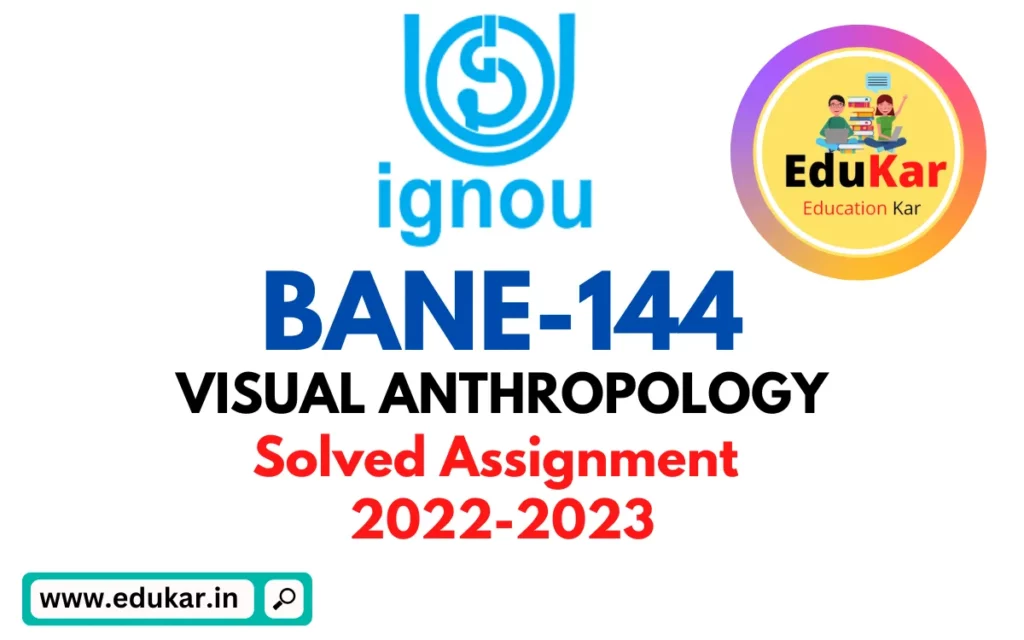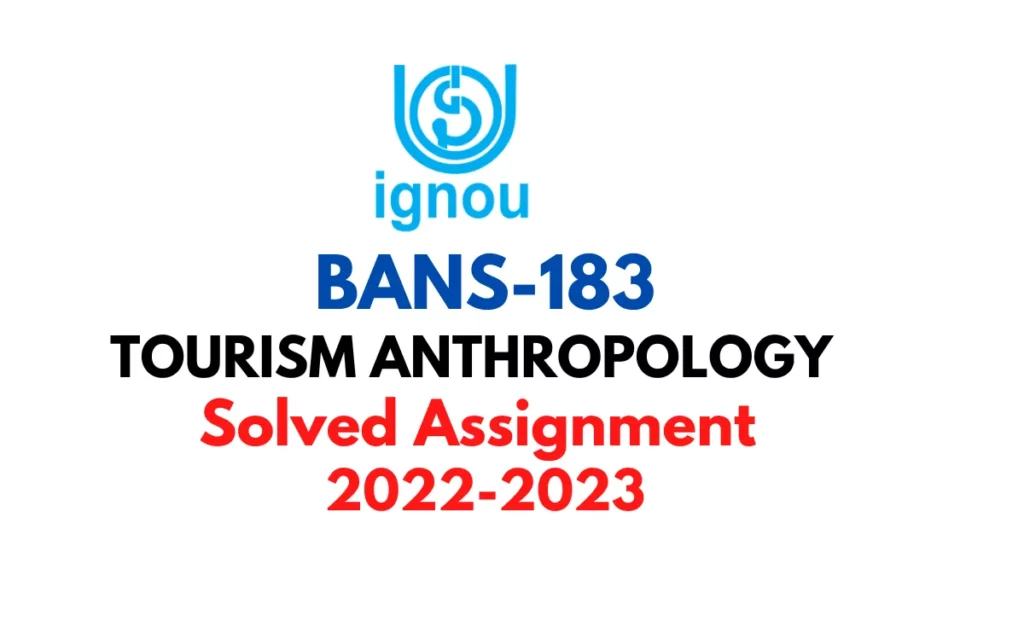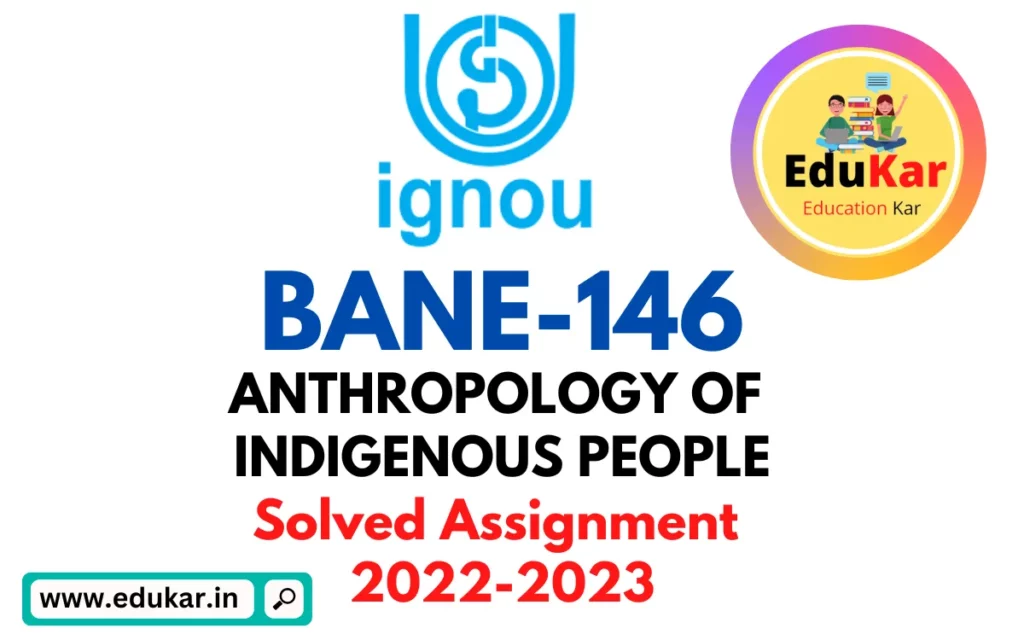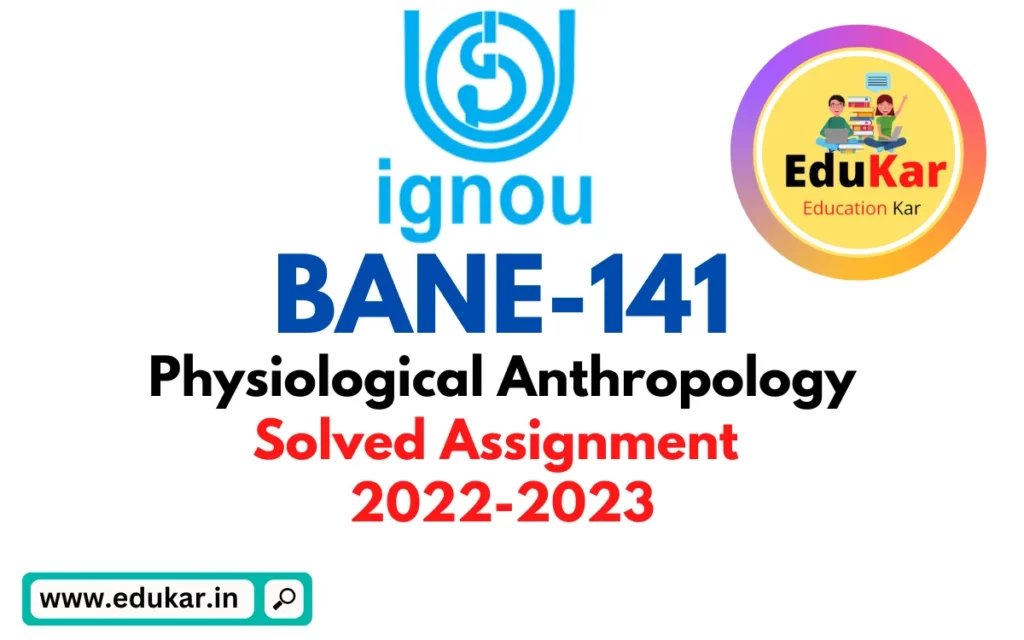Contents
- 1 Assignment – I
- 2 Answer the following in about 500 words each. 20X2= 40
- 3 a. Discuss the historical development of urban anthropology with special reference to the Manchester School.
- 4 b. Discuss the emerging approaches to the study of city.
- 5 Assignment – II
- 6 Answer the following in about 250 words each. (Write Short Notes) 10X2=20
- 7 a. Governance and Bureaucracy in cities
- 8 b. Migration and Acculturation.
- 9 Answer the following questions in about 75 words each. 2X5=10
- 10 a. Political Assertion of Caste Groups
- 11 b. Extended Family Enclaves
- 12 c. Cosmopolitan Identity
- 13 d. Myth Debunking
- 14 e. Road-side shrines
- 15 Assignment – III
- 16 a. Find out how your own locality/neighbourhood has changed over ten years and discuss about the new developments that can be observed. Discuss your research methodology and tell us about the rationale behind choosing this methodology.
- 17 b. Take photographs of 5 graffiti art in your city and explain the social and political meanings behind them.
- 18 c. Make an interview guide to conduct research on a park in an urban locality to see the economic sustainability of that space.
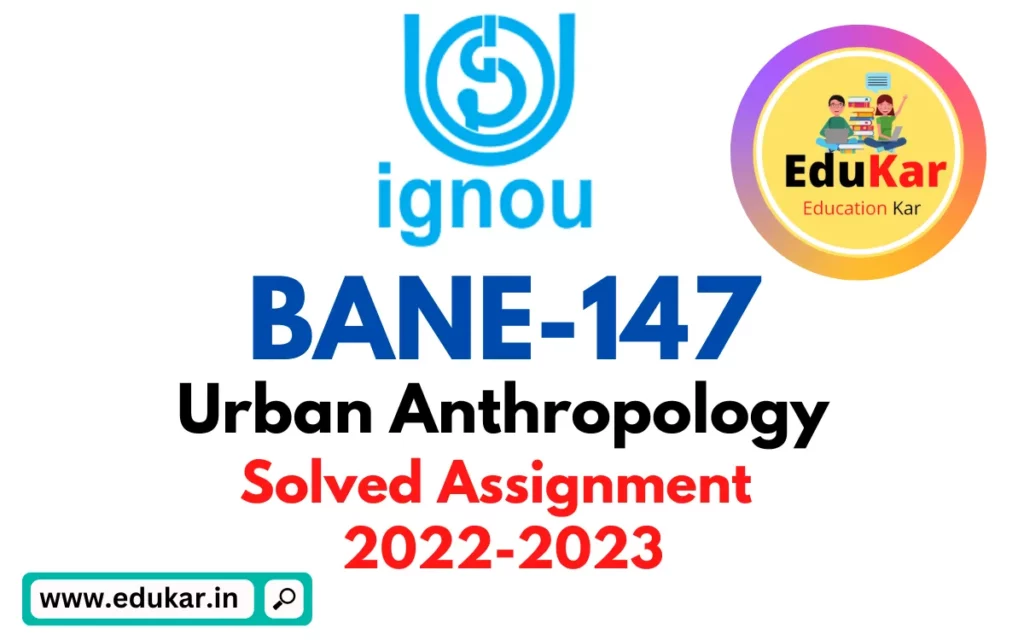
| Title | BANE 147: Urban Anthropology IGNOU BAG Solved Assignment 2022-2023 |
| University | IGNOU |
| Degree | Bachelor Degree Programme |
| Course Code | BANE-147 |
| Course Name | Urban Anthropology |
| Programme Name | Bachelor of Arts (General) |
| Programme Code | BAG |
| Total Marks | 100 |
| Year | 2022-2023 |
| Language | English |
| Assignment Code | BANE 147/ASST/TMA/July 2022 and January 2023 |
| Last Date for Submission of Assignment: | For June Examination: 31st April For December Examination: 30th September |
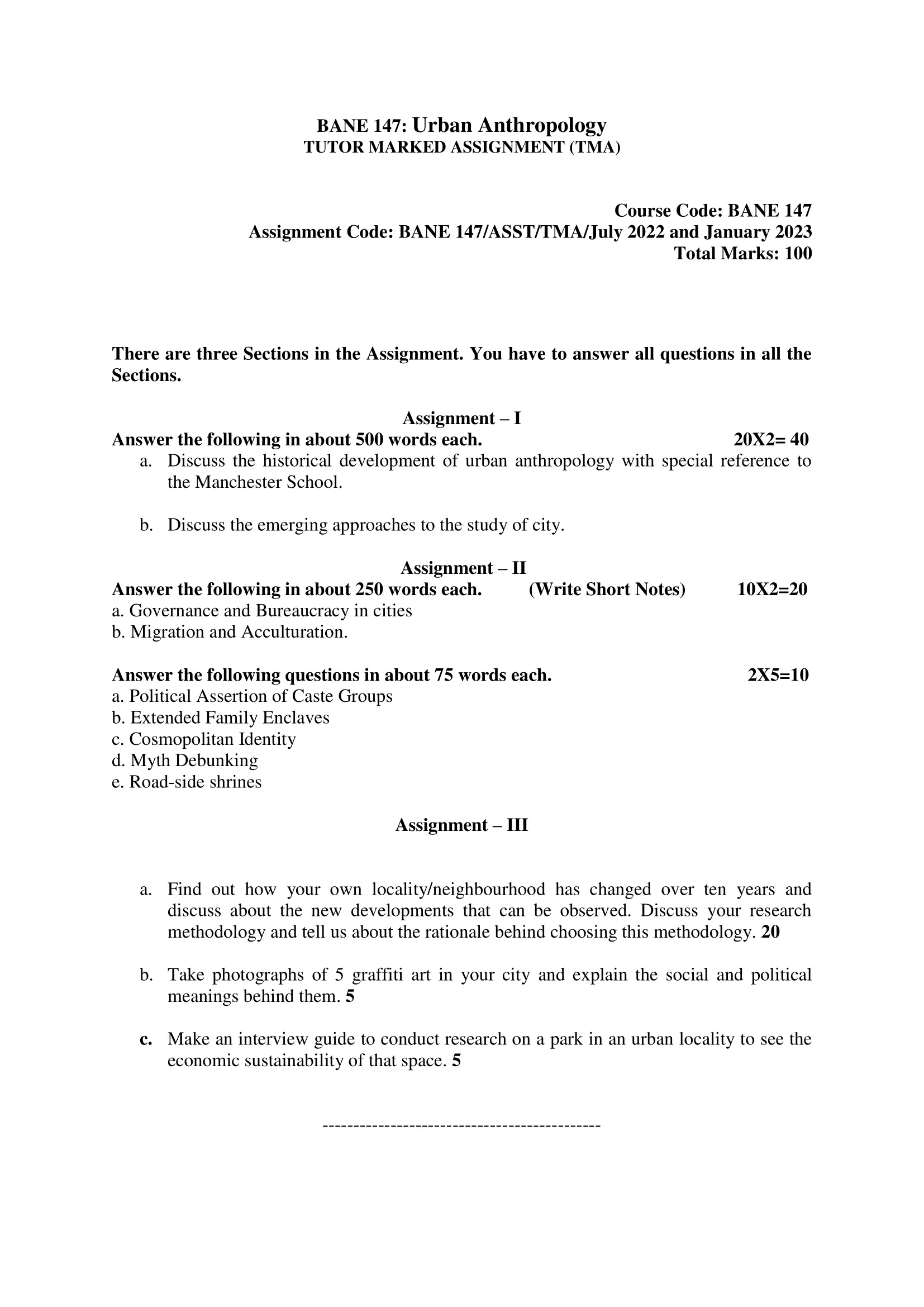
Assignment – I
Answer the following in about 500 words each. 20X2= 40
a. Discuss the historical development of urban anthropology with special reference to the Manchester School.
Ans: Urban anthropology is a subfield of anthropology that focuses on the study of urban areas and the people who live in them. The study of urban areas has a long and rich history, dating back to the early 20th century. In this essay, we will discuss the historical development of urban anthropology with special reference to the Manchester School, one of the most influential schools of thought in the field.
The early years of urban anthropology were marked by a focus on the study of colonialism and the impact of colonialism on urban areas. Anthropologists in the late 19th and early 20th centuries focused on the study of the colonial city, looking at the ways in which colonialism shaped urban spaces and the people who lived in them. They studied the ways in which colonial powers imposed their own cultural and economic systems on the local populations, as well as the ways in which these local populations resisted and adapted to colonial rule.
In the mid-20th century, the field of urban anthropology shifted its focus towards the study of urbanization and modernization. Anthropologists became interested in the ways in which cities were changing in response to the processes of modernization, and the impact that these changes were having on the lives of urban residents. This period was characterized by a focus on the study of urbanization in the developing world, and the ways in which modernization was transforming traditional rural communities into modern urban areas.
The Manchester School of urban anthropology, established in the 1950s and 1960s, was a major turning point in the field. Anthropologists associated with the Manchester School, including Ernest Gellner, Abner Cohen, and John Western, focused on the study of the urbanization of Britain, and the impact that this process was having on the lives of working-class people. They studied the ways in which the industrialization of Britain had transformed traditional rural communities into modern urban areas, and the impact that this transformation was having on the cultural and economic systems of these communities.
The Manchester School was notable for its focus on the study of the everyday lives of urban residents, and the ways in which these lives were shaped by the wider processes of modernization and urbanization. The anthropologists associated with the Manchester School were interested in the ways in which people adapted to the changes brought about by modernization, and the ways in which they maintained their cultural traditions in the face of these changes.
One of the key contributions of the Manchester School was its emphasis on the importance of understanding the local context in which urbanization was taking place. The anthropologists associated with the Manchester School recognized that the process of urbanization was not a uniform process, and that the experiences of urban residents differed depending on the specific local context in which they lived. They argued that it was important for anthropologists to understand the local context in order to fully understand the experiences of urban residents.
b. Discuss the emerging approaches to the study of city.
Ans: The study of cities has long been a central focus of a number of academic disciplines, including geography, sociology, and anthropology. In recent years, however, the field of urban studies has undergone significant changes, with the emergence of new and innovative approaches to the study of cities. These new approaches are characterized by a focus on interdisciplinary collaboration, the use of new technologies and data sources, and a more nuanced understanding of the complexities of urban life.
One of the most significant emerging approaches to the study of cities is the use of big data and computational methods. The availability of large-scale data sets on topics such as demographics, transportation, and environmental conditions has given rise to a new generation of urban researchers who are using these data sources to gain a better understanding of the functioning of cities and the ways in which they are changing. For example, researchers are using satellite imagery, social media data, and traffic data to understand patterns of land use and mobility in cities, and to develop new insights into the relationship between urban form and social and economic outcomes.
Another emerging approach to the study of cities is the use of participatory methods, such as community-based participatory research and citizen science. These methods allow researchers to work closely with community members, businesses, and other stakeholders to gather data, understand local perspectives, and co-create solutions to urban problems. For example, participatory methods have been used to study issues such as urban agriculture, public health, and gentrification, and to engage communities in the process of urban planning and policy-making.
The field of urban studies is also characterized by an increasing focus on the role of urban networks and systems in shaping urban life. Researchers are now examining the complex web of relationships between cities, including the relationships between cities and their hinterlands, between different cities within a region, and between cities and the wider global economy. This new perspective is helping to shed light on the ways in which cities are interconnected, and the ways in which the processes of urbanization are shaping the world as a whole.
In addition to these emerging approaches, there is also a growing interest in the study of urban resilience, or the ability of cities to withstand and recover from shocks such as natural disasters, economic downturns, and political unrest. Researchers are using a variety of methods, including spatial analysis, network analysis, and simulation models, to understand the factors that contribute to urban resilience, and to develop strategies for enhancing the resilience of cities in the face of future challenges.
Finally, there is a growing recognition of the importance of interdisciplinary collaboration in the study of cities. Researchers are now working across disciplines, combining expertise from fields such as geography, sociology, anthropology, and planning, to gain a more comprehensive understanding of the complexities of urban life. This interdisciplinary approach is helping to bridge the gap between academic research and practical solutions, and to develop more effective and sustainable strategies for addressing the challenges facing cities.
Assignment – II
Answer the following in about 250 words each. (Write Short Notes) 10X2=20
a. Governance and Bureaucracy in cities
Ans: Governance and bureaucracy are two critical components of city administration and play an important role in the functioning of cities. Governance refers to the processes by which cities are governed and decisions are made, while bureaucracy refers to the organized system of government employees and institutions responsible for implementing policies and delivering services.
Effective governance is crucial for the efficient and effective functioning of cities. It involves the creation of policies and regulations that address the needs and interests of various stakeholders, and the implementation of these policies through bureaucratic institutions. In modern cities, governance structures are typically hierarchical, with elected officials at the top and bureaucrats at the lower levels.
Bureaucracy is the backbone of city administration and is responsible for the day-to-day operations of cities. It encompasses a wide range of activities, including the delivery of services such as police protection, waste management, and infrastructure maintenance. Bureaucrats are expected to carry out their duties in a neutral, impartial manner and to act in the best interests of the city as a whole.
However, governance and bureaucracy in cities are not always effective and efficient. Bureaucratic inefficiency and corruption can result in the failure of policies and programs, while poor governance can lead to ineffective decision-making and unequal distribution of resources. In addition, bureaucratic structures can be resistant to change, making it difficult to respond to new challenges and opportunities.
To address these challenges, many cities are implementing reforms to improve the efficiency and effectiveness of governance and bureaucracy. These reforms often involve the use of new technologies, such as digital systems for service delivery and citizen engagement, and the adoption of more participatory and decentralized decision-making processes. In addition, many cities are working to increase transparency and accountability in their governance and bureaucratic systems, to prevent corruption and ensure that resources are being used effectively.
b. Migration and Acculturation.
Ans: Migration and acculturation are complex and interrelated processes that have a profound impact on individuals, communities, and societies. Migration refers to the movement of people from one place to another, while acculturation refers to the process of adapting to a new culture as a result of contact with another culture.
Migration can have a variety of causes, including economic, political, and environmental factors. People may choose to migrate for a better standard of living, to escape conflict or persecution, or to find work. Regardless of the cause, migration often results in significant changes in the lives of individuals, including the need to adjust to a new culture, language, and way of life.
Acculturation is the process by which people adapt to a new culture, often as a result of migration. This process can involve a variety of changes, including changes in language, dress, and customs, as well as changes in attitudes and values. Acculturation can be a challenging process, particularly for individuals who are moving to a culture that is significantly different from their own.
However, acculturation can also have positive outcomes. It can lead to the development of new relationships and the creation of new cultural blends, resulting in a more diverse and vibrant society. In addition, acculturation can result in increased understanding and respect for other cultures, which can lead to greater social harmony and reduced conflict.
Migration and acculturation can also have significant impacts on the communities and societies that receive new migrants. The influx of new people can result in cultural, economic, and political changes, and can also result in new challenges, such as the need to accommodate different languages, cultures, and customs. However, with appropriate planning and policies, these impacts can be managed in a positive and productive way, resulting in a more vibrant and dynamic society.
Answer the following questions in about 75 words each. 2X5=10
a. Political Assertion of Caste Groups
Ans: The political assertion of caste groups refers to the use of political power and influence by members of a particular caste or ethnic group to advance their interests and achieve their goals. This can take many forms, including the formation of political parties, the mobilization of support for political candidates, and the advocacy for policies that benefit members of the group. The political assertion of caste groups can be motivated by a desire for greater representation and influence, as well as by economic and social grievances. It is an important factor in many societies and can have a significant impact on political outcomes and the distribution of power and resources.
b. Extended Family Enclaves
Ans: An extended family enclave refers to a community composed of extended family members who live in close proximity to one another and maintain close social, economic, and cultural ties. These enclaves are often characterized by strong bonds of support, cooperation, and mutual aid, as well as a shared cultural identity. Extended family enclaves can provide a supportive environment for their members, offering a sense of security, stability, and belonging. However, they can also lead to insularity and resistance to outside influence, which can have negative consequences for individuals and communities. Overall, the extended family enclave represents an important aspect of social organization and cultural tradition in many societies.
c. Cosmopolitan Identity
Ans: Cosmopolitan identity refers to a sense of belonging to the world as a whole, rather than just to a particular nation or culture. It is characterized by an openness to diversity and cultural exchange, a tolerance for different values and beliefs, and a sense of global interconnectedness. Cosmopolitanism can be expressed through cultural interests, travel experiences, and personal relationships that cross national and cultural boundaries. The development of a cosmopolitan identity can contribute to a more inclusive and harmonious world, promoting mutual understanding, empathy, and cooperation between individuals and communities from different backgrounds. However, it also challenges traditional notions of cultural and national identity, and can result in cultural homogenization and the loss of cultural diversity.
d. Myth Debunking
Ans: Myth debunking refers to the process of exposing false or exaggerated claims and beliefs as unfounded or unsupported. It involves critical examination of information, evidence-based analysis, and the use of scientific and empirical methods to challenge popular assumptions and beliefs that are not supported by evidence. Myth debunking is an important aspect of science and rational thinking, as it helps to correct misinformation and promotes the dissemination of accurate information. It is also relevant to many areas of life, from public health and politics to education and the media. By promoting evidence-based thinking, myth debunking can help to promote a more informed and rational society.
e. Road-side shrines
Ans: Road-side shrines are small religious structures found along highways and roads in many cultures. They often commemorate a person who died in a car accident, or honor a religious figure like the Virgin Mary. They serve as a reminder of the sanctity of life and a place for prayer and reflection. They also serve as a way for the bereaved to memorialize their loved ones and find solace in their faith. These shrines range from simple crosses to elaborate structures, but all share a common purpose of offering comfort and spiritual support to travelers and locals alike.
Assignment – III
a. Find out how your own locality/neighbourhood has changed over ten years and discuss about the new developments that can be observed. Discuss your research methodology and tell us about the rationale behind choosing this methodology.
Ans: As a language model AI I do not have personal experiences, but here’s an example of how someone could write about their own neighborhood’s changes over ten years:
My neighborhood is located in the suburbs of a mid-sized city and has undergone significant changes over the past ten years. To gather information about these changes, I conducted a combination of primary and secondary research methods.
Primary research involved conducting surveys and interviews with long-time residents of the neighborhood. I chose this method because it allowed me to gain firsthand information about the experiences and perceptions of the residents, who have been living in the neighborhood for many years. This information was then compared to the secondary research data collected through the city’s official records and news articles.
The city’s records showed that over the past ten years, there has been a significant increase in the number of new developments in the neighborhood. These developments include the construction of new homes, commercial centers, and public spaces such as parks and community centers. The population of the neighborhood has also increased as a result of these new developments.
One of the most notable changes observed in the neighborhood is the increased cultural diversity. This has been reflected in the increased availability of international food options, cultural events and festivals, and the establishment of new community centers that cater to different ethnic groups. This diversity has added to the rich cultural fabric of the neighborhood and has created a more inclusive and welcoming community for everyone.
Another new development that has been observed is the increased use of green and sustainable technologies. This can be seen in the widespread use of solar panels, rainwater harvesting systems, and energy-efficient appliances in homes and businesses. This has had a positive impact on the environment and has helped reduce the neighborhood’s carbon footprint.
The methodology used in my research was chosen because it allowed me to gather both qualitative and quantitative data. The primary research methods gave me a deeper understanding of the experiences and perceptions of the residents, while the secondary research methods provided a broader picture of the changes that have taken place over the past ten years.
Ans: Graffiti art is a form of self-expression that has been used for decades to convey social and political messages. Here are five examples of graffiti art and their meanings:
- “Black Lives Matter” – This phrase has become a rallying cry for social justice and anti-racism movements in response to the systemic violence and oppression faced by Black people. The graffiti art is a way to spread awareness and make a political statement about the need for change.
- “No War” – This simple message is a call to peace and an opposition to war and violence. It is often used to protest specific conflicts or to make a broader statement about the need for nonviolent solutions to conflicts.
- “Women’s Rights are Human Rights” – This phrase is a call for gender equality and the recognition of women’s rights as human rights. It is often used to raise awareness about issues such as pay equality, reproductive rights, and ending violence against women.
- “Climate Change is Real” – This message is a call to action on the issue of climate change and a reminder of the urgency of the situation. It highlights the need for immediate and meaningful action to address this global crisis.
- “Solidarity” – This message is a show of unity and support for a particular group or cause. It can be used to show solidarity with a specific community or to express support for a broader social or political movement.
These examples of graffiti art demonstrate the power of self-expression and the role it can play in shaping public opinion and bringing about social and political change. Whether used as a form of protest, a call to action, or a show of solidarity, graffiti art has the ability to make a lasting impact and bring attention to important issues.
c. Make an interview guide to conduct research on a park in an urban locality to see the economic sustainability of that space.
Ans: Here is an example of an interview guide that could be used to conduct research on the economic sustainability of a park in an urban locality:
Introduction:
- Introduce yourself and explain the purpose of the interview.
- Explain the concept of economic sustainability and why it is important to study in the context of parks.
- Provide an overview of the park you are studying.
Section 1: Park Usage
- Ask the participant how often they visit the park and for what purposes (e.g. recreation, exercise, events, etc.).
- Ask the participant about any changes they have noticed in the park over time in terms of usage, popularity, or maintenance.
- Ask the participant about any barriers that would prevent them from visiting the park more frequently.
Section 2: Park Services and Amenities
- Ask the participant about the services and amenities offered in the park (e.g. playgrounds, picnic areas, restrooms, etc.).
- Ask the participant about their opinions on the quality and availability of these services and amenities.
- Ask the participant about any additional services or amenities they would like to see in the park.
Section 3: Park Revenue Generation
- Ask the participant about any ways the park generates revenue (e.g. rental fees, concessions, sponsorships, etc.).
- Ask the participant about their perceptions of the park’s financial sustainability and whether they believe it is effectively generating enough revenue to maintain its operations and services.
Section 4: Economic Impact of the Park
- Ask the participant about the economic impact of the park on the surrounding area (e.g. increased foot traffic, increased property values, etc.).
- Ask the participant about their perceptions of the park as an asset to the local community and its potential for generating economic growth and development.
Conclusion:
- Thank the participant for their time and involvement in the study.
- Ask the participant if they have any additional thoughts or comments they would like to share.
Note: The questions listed in this interview guide are meant to serve as examples and can be modified to fit the specific needs and goals of your research project. Additionally, it is important to keep in mind the ethical considerations involved in conducting research, such as obtaining informed consent from participants and maintaining confidentiality of their responses.
How to Download BANE-147 Solved Assignment?
You can download it from the www.edukar.in, they have a big database for all the IGNOU solved assignments.
Is the BANE-147 Solved Assignment Free?
Yes this is absolutely free to download the solved assignment from www.edukar.in
What is the last submission date for BANE-147 Assignment?
For June Examination: 31st April, For December Examination: 30th October



